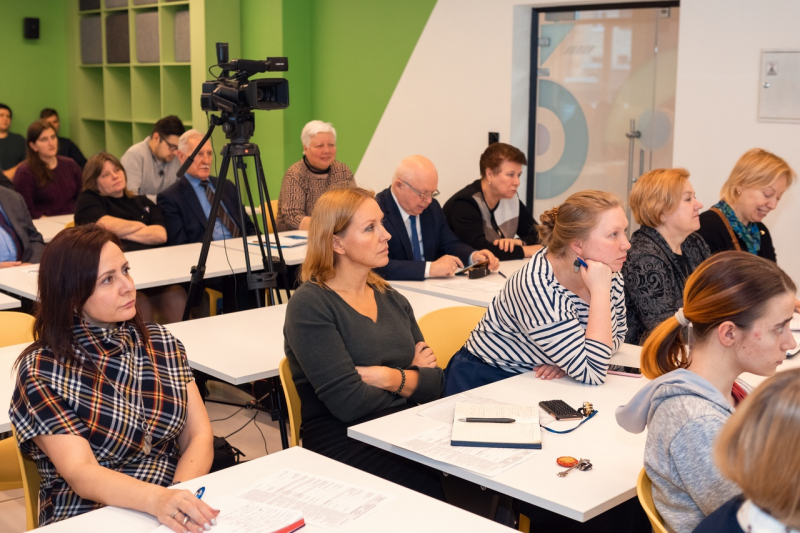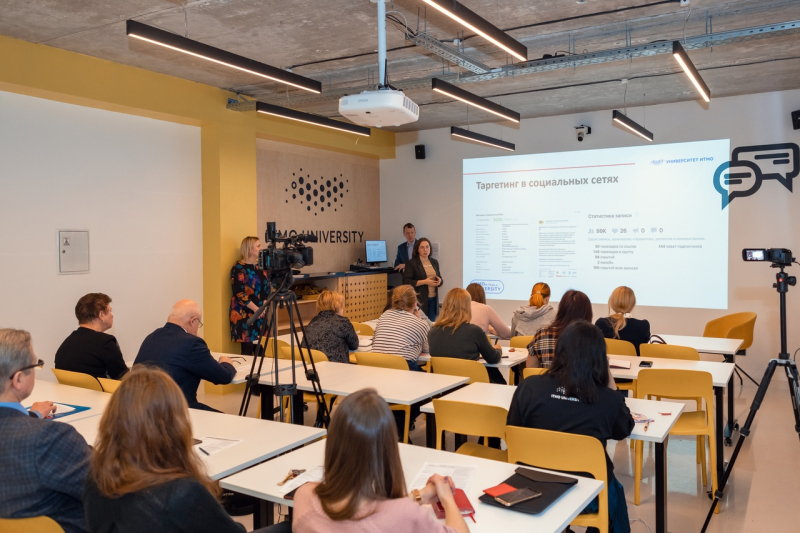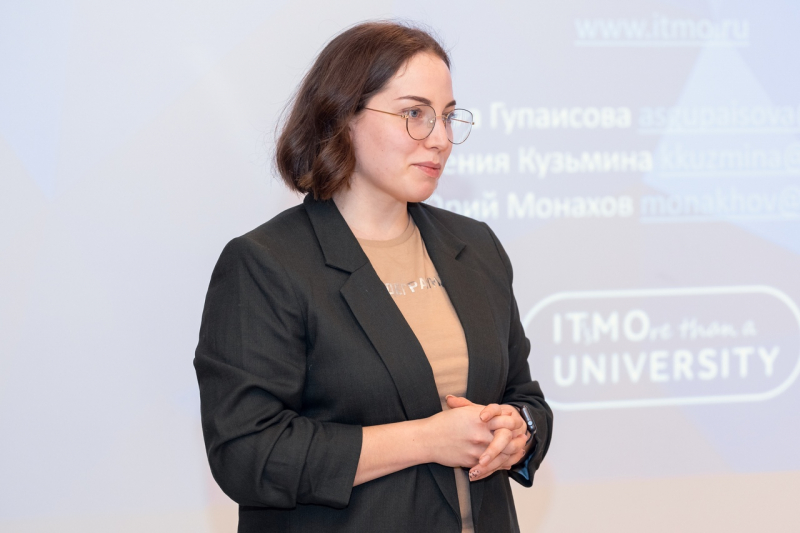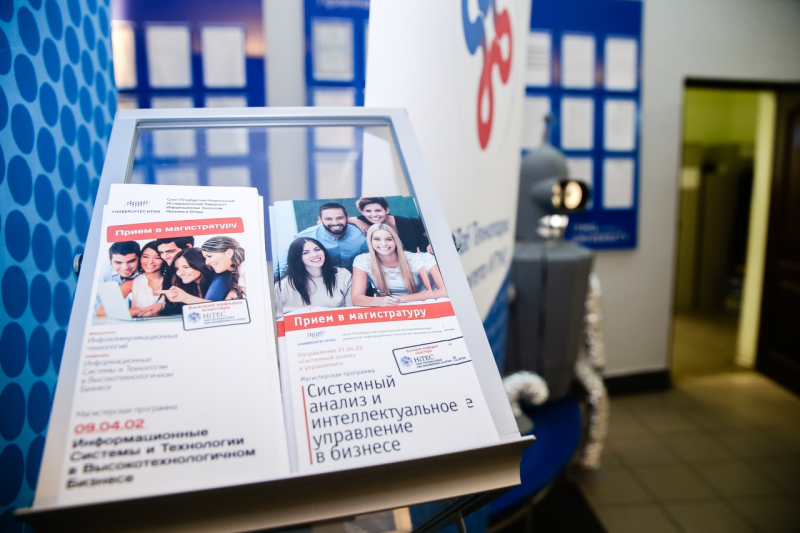Communication channels
Every program head faces the problem of how to attract future students to their Master’s programs. And not just all students, but the best of them, in terms of not just their level of training but also their academic potential.
Choosing a proper communication channel is of great importance here, something that’s used to communicate the information about the educational programs a university has to offer. A proper presentation of this information, i.e. the message itself, is important, as well. For example, one of the traditional methods is to hang a decree with a list of entrance exams (the message) in a hallway (the communication channel). But this method isn’t very efficient. Why?
First of all, a decree is usually written in a very formal way. The students won’t be able or wouldn’t want to “decipher” it, as they weren’t taught to read such documents. Secondly, about 70% of Master’s students usually come from other cities, so they won’t have an opportunity to see this decree.
Hence, all information about a program, entrance examinations, and requirements is to be written in a comprehensible way and distributed via more efficient communication channels, for example by targeting the graduates of other universities who have the associated specializations. This can be done via social media, mailouts, contextual advertising and so on.

Target group
But first of all, we have to identify who exactly we are sending our message to, i.e. which kind of applicants we are interested in: recent graduates or experienced specialists, graduates of particular universities or specializations, applicants with a specific level of training or specific goals, etc.
We also have to have a keen understanding of applicants’ requirements, what they want to gain from a Master’s program: more opportunities for a quick and successful employment or a stepping stone to deeper research and a career in science? Whether they want to get better training, or is a diploma all they aim for? What exactly is their reason to pursue a Master’s program?

It’s important to monitor the trends on the educational programs market and study your competitors in not just what has to do with Master’s programs but other educational programs, as well: online courses, summer and winter schools, mixed programs, etc. It’s quite obvious that your potential applicants will be looking for the most efficient, quick, and cheap courses, and you can give a detailed description of the advantages that your program has and how it can be of benefit to the applicants.
Promotion
As of today, the main channel for communicating with applicants is social media. ITMO Master’s programs have their own community where detailed information on educational programs and entrance examinations is published. It also features relevant news, articles, and interviews with lecturers and students. All of this serves the purposes of promoting the programs and informing their students. But the problem is that all this information reaches only those who are subscribed, i.e. only the already incentivized applicants.
Targeting
Targeted delivery of messages can help attain better coverage. Gender, age, location, university, interests – the more precise this information is, the more successful your promotional effort will be, as your message will reach the people who really need it.

The target response of such a campaign is getting the students to follow the link or subscribe to our community. This is done by the people who have already become interested in a program and want to learn more about it. They get to look at a program’s page on abit.ifmo.ru, and a very important thing here is for the program description to be comprehensive and attractive. We recommend mentioning not just a list of entrance examinations and requirements but also such information as educational materials and online courses that can help students improve their level of training in the associated fields.

You should also list all the competitive advantages of your program and give a detailed description on the curriculum. For one, a research among ITMO’s first- and second-year Master’s students that was conducted by the Strategic Communications Department in 2018 showed that one-third of the Master’s students wanted more information on employment prospects, internships, lecturers, and curricula as of the time they applied.
Ads and mailouts
Another promotional technique is contextual advertising. It works with those who’ve already expressed interest in (i. e. searched for) Master’s programs or educational courses, maybe at other universities. Contextual advertising makes use of keywords and word combinations. It can be used to promote programs that aren’t traditionally associated with ITMO University, for example food biotechnology.
Another good instrument is mailouts. You can send emails to all Bachelor’s students, as well as previous years’ applicants and those who studied on preparatory courses. The most important thing here is for the mailout to look good and have all the necessary information.

Interaction with the media
This can help you tell about everything important that happens: for example, that your team published an article, that one of your students or professors got an award, that some event or open lecture took place, and so on. You can post your news on ITMO.NEWS, and they can well be published under other titles as well, which increases your coverage.
What’s more, representatives of the media can come to you for an expert opinion on some newsbreak or a comment on some relevant topic. All of this works towards the promotion of your programs by letting more people learn about them.
You can also increase your coverage by participating in events that have to do with education and science: open lectures, festivals, exhibitions, or even events that are not exactly scientific.

What do you start with
Promotion is a comprehensive and time-consuming process, so you have to prepare in advance. Check with these criteria in order to find out whether you’re ready for the 2020 admission campaign, and if you need help, feel free to get it at the Strategic Communications Department and the Master's Programs Development Center.
-
Study your students. Make a document where you describe their interests, where they are from, where they studied before, their former specializations, how they learned about the program, etc.
-
Check the description of your program on our website. Review the texts: are they comprehensible enough? Are they easy to read? Do they show the full picture? Every year, over a hundred thousands people visit this page.
-
Make a brochure about your program in accordance with ITMO’s common corporate style (you can get help at the Advertising Office, if necessary). Take these brochures to events and meetups where potential applicants can be present.

-
Make an online Open Day. Some 70% of applicants are from other cities, so it’s hard for them to come to such events in person. In order to do an online broadcast, speak to Alyona Gupaisova.
-
Make use of our community in VK. Post news, tell about your current students, lecturers, research, tours and so on.
-
Share what happens on your program with ITMO.NEWS. If your lecturers or Master’s students publish an article in a cited journal or receive a patent or an award, they can tell their story. Every month, over 15,000 people read ITMO.NEWS.
-
You can make a video, livestream or podcast with the help of the Strategic Communications Department. In general, about 30-150 people come to open lectures. By posting them online, you can increase the coverage tenfold.
-
Order targeted and contextual advertising at the Strategic Communications Department and the Master’s Programs Development Center. We will help find applicants and deliver them your message.
Mind that these tools don’t cancel the ones you already use, but rather complement them. Every program head is free to choose the channels and tools that they think will suit their program the best.





